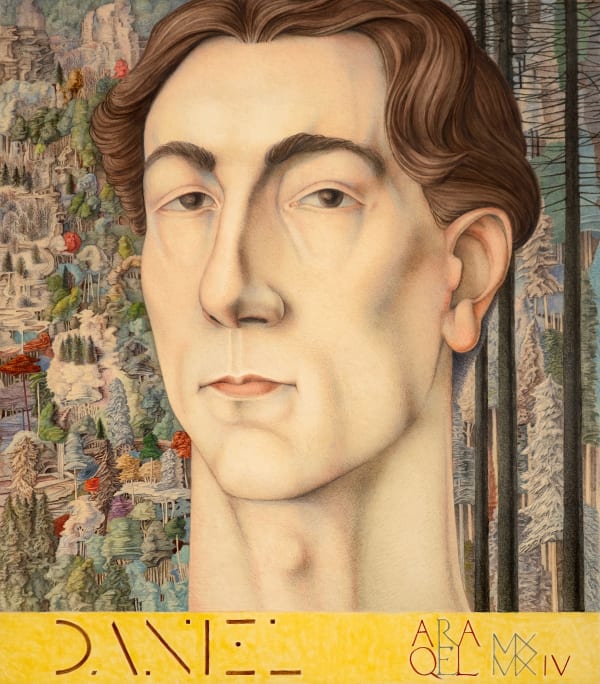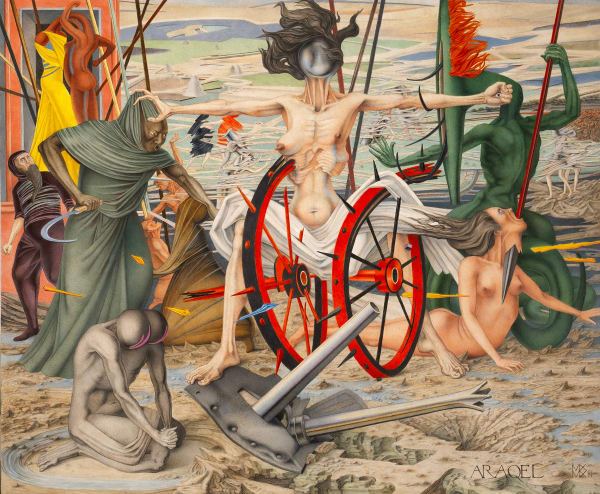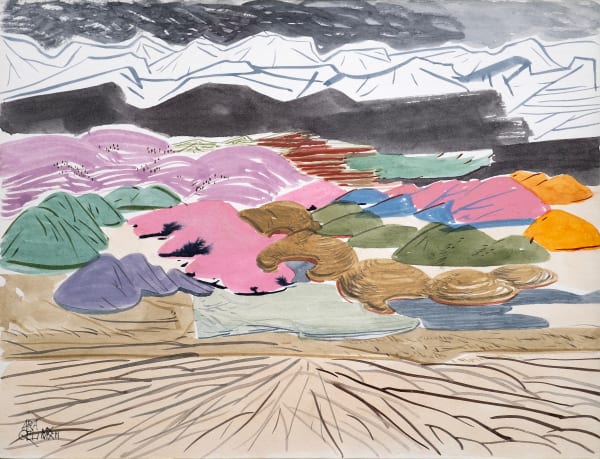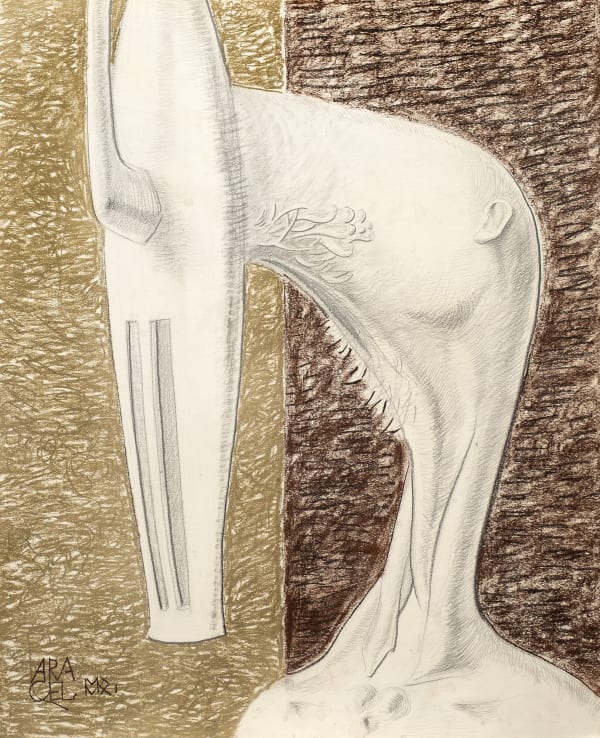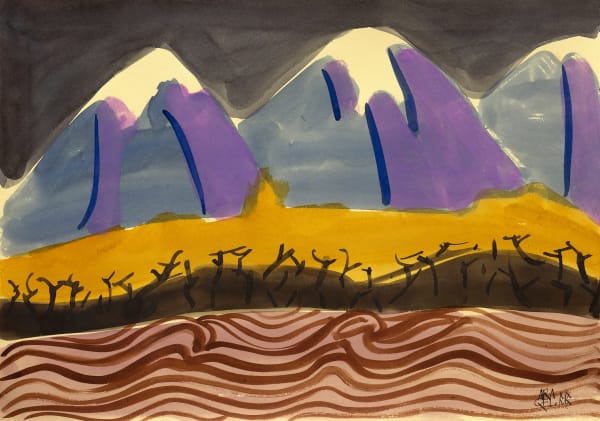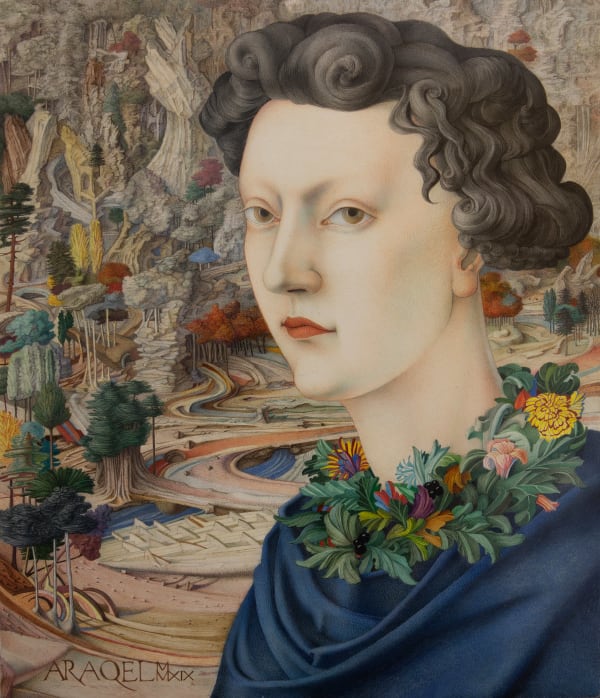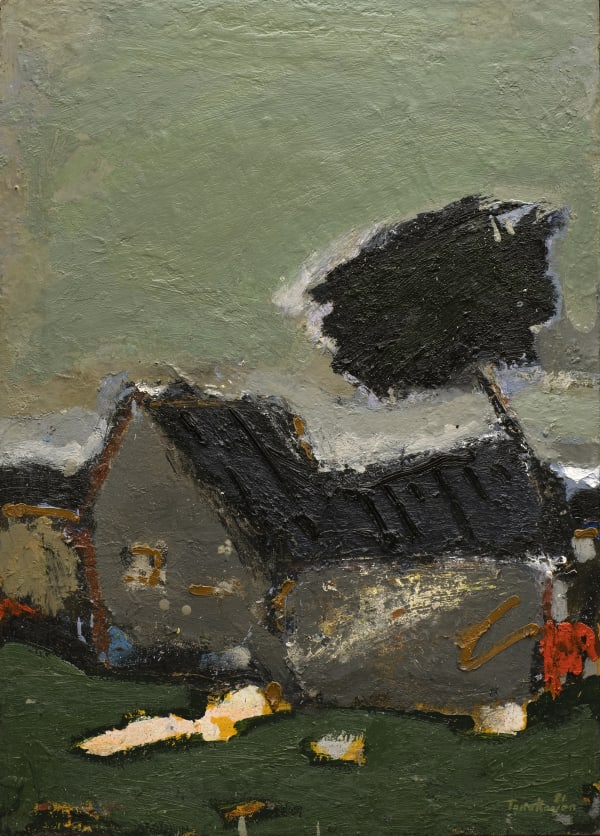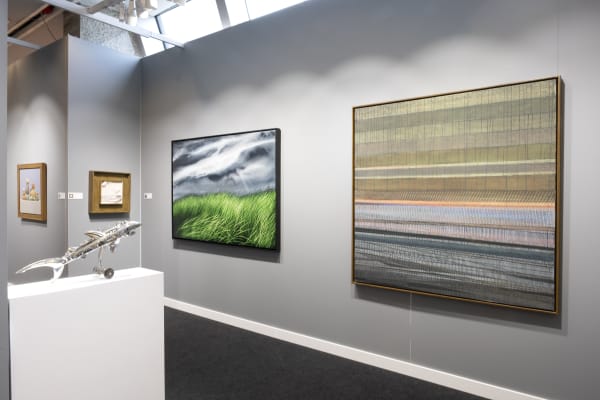Biography
Karen Arakel (ARAQEL) was born in 1960, Tbilisi, Georgia and moved to Yerevan (where he has been residing ever since) when he was 1,5 years old. He has been painting since the age of 4. After graduating high school, Karen Arakel was admitted to Fine Arts and Theater Institute of Yerevan into Ceramics Faculty, however not satisfied with the teaching approach, in the third year he left the Institute and continued to study art on his own. He learned his remarkable technique on his own, through studying paintings of artists who came before him. His painting style has changed numerous times throughout his career. Currently his genre is closest to the style of Renaissance. It is impossible to talk about Karen Arakel’s body of work without referring to certain periods in art history and to the aesthetics of different civilizations. Likewise, his art has been formed and has gained unique significance through an in- depth study and analysis of art. The artist tries to not only comprehend merely formal representations of pictorial and dimensional characteristics of the arts of the past, but also permeates into their causes and preconditions. He tries to figure out who was the person that created the artwork, to feel his spirit, perception, peculiarities of his mindset. In quest of their ego and personal vision, every artist embarks on personal research and finds inspirations. The path chosen by Karen Arakel is uncommon, for he is in no rush to become recognizable, to find his own style and have an accomplished technique. Open to influences, the artist simultaneously and conscientiously identifies and defines the arts, periods and artists who are close to him in spirit, artistic approach, vision, and aesthetic ethos. Encounters with cultures of different eras and exploration of issues these cultures raise becomes an important tool in finding the clue to his own creativity. For this purpose, the artist has examined and analyzed many different movements and styles such as Dadaism, Symbolism, Abstract Expressionism, Surrealism, Post-Surrealist Modernism in addition to Archaic, Hellenistic, Classical and Renaissance arts over the years, and ultimately produced works with his own interpretation. Karen Arakel's approach of seemingly looking towards the past but taking a step forward, is also one of the most important reasons for the variety of style the artist has developed.
The art of Karen Arakel is undoubtedly unrivalled like the artist himself. As soon as you try to break into the inner world of the artist, you feel his art is sincere like him and at the same time so simply expressed like the artist’s thoughts, so isolated and at the same time so close to nature, to humanity, it is real and at the same time completely imaginary. No line is senseless in the works of the artist. In Karen Arakel’s art one immediately notices the elements of surprise, unexpected juxtapositions and non sequitur, features typical to surrealism. Considering his art a kind of revolutionary movement, Arakel unwillingly struggles with reality, with rules and laws and stated stereotypes that are identically unacceptable for the artist. Inspired by surrealism, the artist’s works contain political and social elements. There is a lot of philosophy in the artist’s tale, however he never forgets the famous saying, “Everything genius is simple.”
Karen Arakel’s works reflect various guises of the allegory of nature, sometimes enlivened with human figures. The artist merges ordinary and incredible images, illusion, and visual experience close to or distant from the predictable border. By creating different horizons, he couples them with human beings or animals that ignore the laws of optical perspective and the earth's gravitational force. Dreams, premonitions, introspection, humanistic primal instincts, joys, inner fears, their pure unadulterated integrity, and the use of various allegorical allusions and symbols have been the subject of the artist's meticulous works.
Signing his works under the moniker ARAQEL, the artist thoroughly investigated the pictorial arts of different countries, honing his skills and mastering various graphic and drawing techniques, including Sumi-e, also known as the ink wash painting style originating from Japan and China, which he has synthesized with Western modern art, forming the basis of his oeuvre. Furthermore, having a full command of the oil painting technique, Karen Arakel also specializes in the "tempera" technique on wood, which is very difficult to apply because it dries very quickly and shows any imperfections immediately.
Convinced that in Armenia the age of fascination with Modernism will be short-lived, he preferred to avoid group exhibitions and started declining any such offers. In all this time, the only exceptions have been two exhibitions: “III-rd Floor” at the Union of Artists in 1987 and an exhibition held at Ervand Kochar Museum in 1991. Then, after such careful preparation, did he begin to think about organizing a well-thought-out individual exhibition. The retrospective exhibition of the artist, opened at the Galentz Museum in Yerevan in 2015, presented the artist’s oeuvre of the last 30 years. Besides paintings and graphic works, art objects and assemblages were also presented to complete the artist’s aesthetic vision. Nearly all Karen Arakel’s works spread among numerous private collections in different countries: in particular, the USA, the Netherlands, Spain, and Turkey.
Selected Works
-
 Daniel, 2024
Daniel, 2024 -
 Gotik / Gothic, 2024
Gotik / Gothic, 2024 -
 Umutta İyi Niyet / Bona Fide In Spe (Good Faith in Hope), 2023
Umutta İyi Niyet / Bona Fide In Spe (Good Faith in Hope), 2023 -
 Kendini Yok Etmek / Self Destruction, 2023
Kendini Yok Etmek / Self Destruction, 2023 -
 Manzara / Landscape, 2023
Manzara / Landscape, 2023 -
 İğrençliğin Karanlığı / Darkness of Abomination, 2022
İğrençliğin Karanlığı / Darkness of Abomination, 2022 -
 İsimsiz / Untitled, 2022
İsimsiz / Untitled, 2022 -
 Şafak / Dawn, 2021
Şafak / Dawn, 2021 -
 İşte İnsan / Ecce Homo, 2021
İşte İnsan / Ecce Homo, 2021 -
 İsimsiz / Untitled, 2021
İsimsiz / Untitled, 2021 -
 İsimsiz / Untitled, 2021
İsimsiz / Untitled, 2021 -
 İsimsiz / Untitled, 2021
İsimsiz / Untitled, 2021 -
 İsimsiz / Untitled, 2021
İsimsiz / Untitled, 2021 -
 İsimsiz / Untitled, 2021
İsimsiz / Untitled, 2021 -
 İsimsiz / Untitled, 2021
İsimsiz / Untitled, 2021 -
 Ara Dağı / Ara Mountain, 2020
Ara Dağı / Ara Mountain, 2020 -
 Bölünmüş İçgüdü / Split Instinct, 2020
Bölünmüş İçgüdü / Split Instinct, 2020 -
 İsimsiz / Untitled, 2020
İsimsiz / Untitled, 2020 -
 İsimsiz / Untitled, 2020
İsimsiz / Untitled, 2020 -
 İsimsiz / Untitled, 2020
İsimsiz / Untitled, 2020 -
 İsimsiz / Untitled, 2020
İsimsiz / Untitled, 2020 -
 İsimsiz / Untitled, 2020
İsimsiz / Untitled, 2020 -
 İsimsiz / Untitled, 2020
İsimsiz / Untitled, 2020 -
 İsimsiz / Untitled, 2020
İsimsiz / Untitled, 2020 -
 İsimsiz / Untitled, 2020
İsimsiz / Untitled, 2020 -
 İsimsiz / Untitled, 2020
İsimsiz / Untitled, 2020 -
 Angela, 2019
Angela, 2019 -
 İsimsiz / Untitled, 2018
İsimsiz / Untitled, 2018 -
 Nelly, 2017
Nelly, 2017
EXHIBITIONS
-

IN THE SHADOW OF MOUNT AGRI
Galeri 77 artists in Erarta Museum's newest exhibition 22 Nov 2024 - 23 Mar 2025Erarta Museum's newest exhibition, "In the Shadow of Mount Agri" is made up of Galeri 77's artists.Read more -

Body & Beyond
Galeri 77 8 Aug - 7 Sep 2024In its newest group exhibition Galeri 77 brings together 18 artists, creating a captivating journey through the world of figurative art. Bringing together unique perspectives, this selection offers art lovers...Read more -

AFTERWARDS: The Dissolution of Human Traces
Galeri 77 14 Mar - 5 May 2024Galeri 77 is hosting a very special exhibition between March 14 and May 5, bringing together the striking works of Karen Arakel, Roman Babakhanian, Mehmet Resul Kacar, Roman Kakoyan, David...Read more
Fairs
-
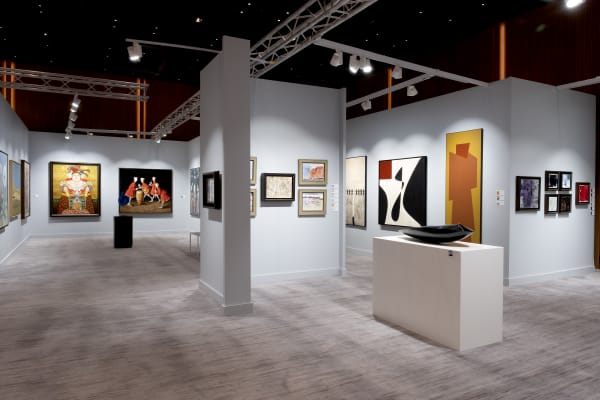
Contemporary Istanbul 2025
20th Edition 24 - 28 Sep 2025Galeri 77 is presenting art lovers with a comprehensive selection of 38 works by 30 artists it represents from both Turkey and abroad at the...Read more -

Contemporary Istanbul 2024
19th Edition 23 - 27 Oct 2024Galeri 77 brings together works from 28 artists, both local and international, encompassing various styles such as expressionism, surrealism, neo-pop art, experimental art, photorealism, abstract,...Read more -
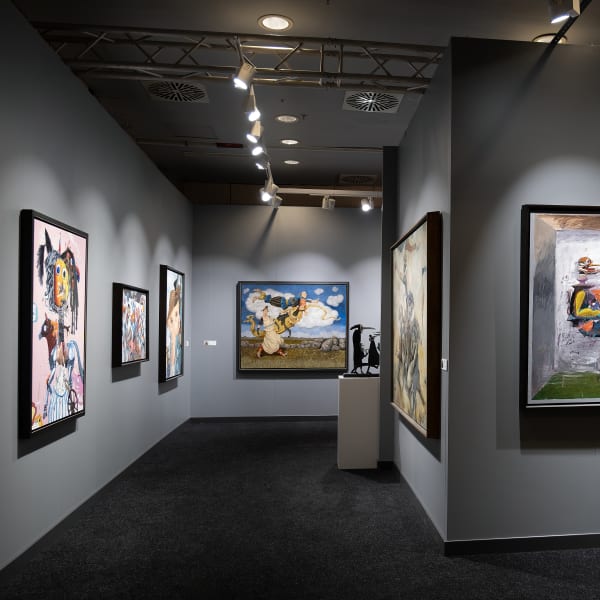
CI Bloom 2024
3RD EDITION 25 - 28 Apr 2024Galleri 77 is thrilled to announce its participation in the 2024 edition of CI Bloom. Join us at booth LK-29 for an exquisite presentation of...Read more -

Contemporary Istanbul 2023
18th Edition 26 Sep - 1 Oct 2023Galeri 77 is taking place in Contemporary Istanbul with a very special selection gathering the artworks produced in a wide spectrum ranging from expressionism to...Read more

